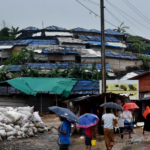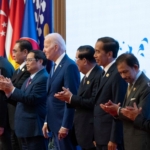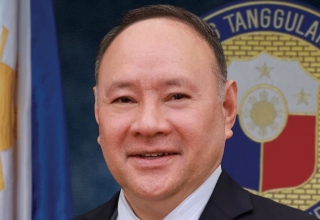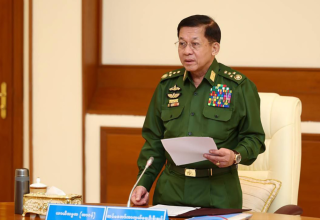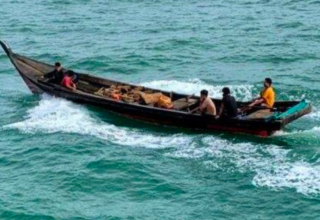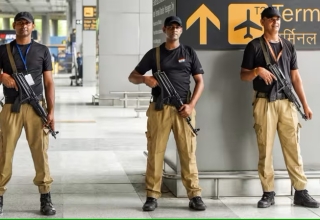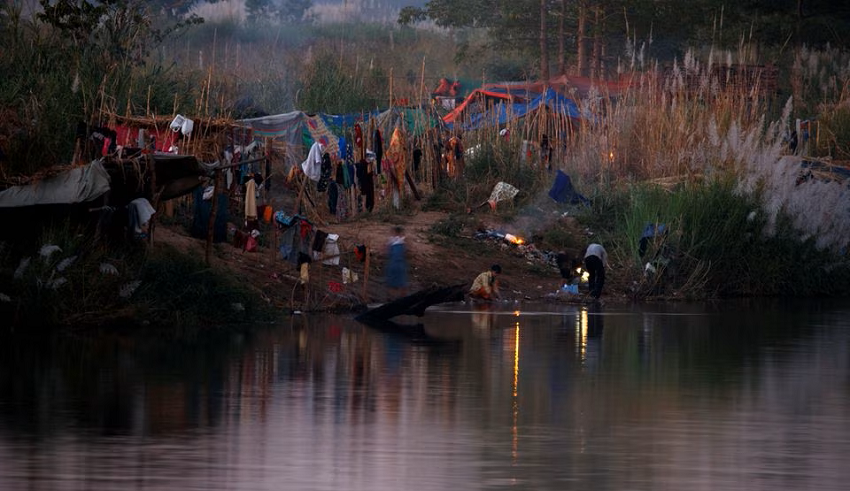
Since Wednesday, approximately 10,000 Burmese have fled to Thailand to escape the intense fighting between the military and elements of a powerful ethnic armed group, according to Thai authorities. The refugees are fleeing the pro-military militia-controlled town of Shwe Kokko, which is home to casinos owned by the Chinese. This is one of the most significant cross-border migrations since the military coup two years ago.
Since February 2021, a civil war has been raging as a result of the failure of the coup-installed military government to impose its authority over significant portions of the country. The military is fighting established ethnic armed groups in border regions that have been at war with the military for decades, as well as newly-formed anti-coup militias known as the People’s Defence Forces (PDF) in a large portion of the country.
After the Karen National Liberation Army (KNLA) and its allies launched attacks on military outposts and a gate camp near Shwe Kokko on Wednesday, the latest combat broke out. According to KNLA, more than 80 persons have been killed on both sides. The military has not yet issued a statement regarding the conflict.
Fierce fighting in Shwe Kokko leads to mass exodus to Thailand
As refugees seek refuge in schools, monasteries, and rubber plantations, aid workers in the border regions of Mae Sot and Mae Ramat, Thailand, have appealed for immediate humanitarian assistance. Kay Thi Htwe, a Burmese volunteer at a monastery in Mae Sot that is housing 500 refugees, stated, “On the long run, we need more donors.”
The KNLA has also shut down the Myawaddy-Kawkareik Asia highway, one of the primary roads leading to the border, for two weeks beginning on Friday. The enclave is governed by the military-aligned Border Guard Forces, who are safeguarding the casinos and advising residents to remain indoors.
Related Posts
This comes as the military continues to target schools, clinics, and villages in an effort to suppress civilian resistance. This week, the military announced that it had detained 15 online teachers for a school supported by the exiled National Unity Government (NUG). The teachers were taken from their residences in Mandalay, Saigang, and Magway, according to the BBC, which was informed by a member of the General Strike Committee of Basic Education Workers.
10,000 Burmese refugees seek shelter in Thailand amid escalating violence
In Myanmar, education has always been a battlefield. Teachers were in the vanguard of the massive demonstrations called by the Civil Disobedience Movement in the weeks following the military takeover. They were among the first, along with health-care employees, to walk out in protest against the coup. In May of 2020, approximately 150,000 teachers and university lecturers lost their employment as a result of their refusal to comply with the military junta’s orders to return to work after the coup was crushed. Many chose to go clandestine, joining schools and clinics in communities that had begun armed resistance to military rule.
Independent institutions and clinics are viewed by the military as an existential threat. According to official statistics, the number of students taking the 10th grade matriculation exam in state-run institutions is now one-fifth of what it was prior to the coup. Teachers employed in the private sector have been labeled militants.
With pervasive reports of human rights abuses and ongoing violence, the situation in Myanmar remains gravely concerning. The international community condemned the actions of the military junta and imposed sanctions, but the situation remains volatile and uncertain. The ongoing hostilities and population displacement underscore the critical need for a peaceful resolution to the crisis.

